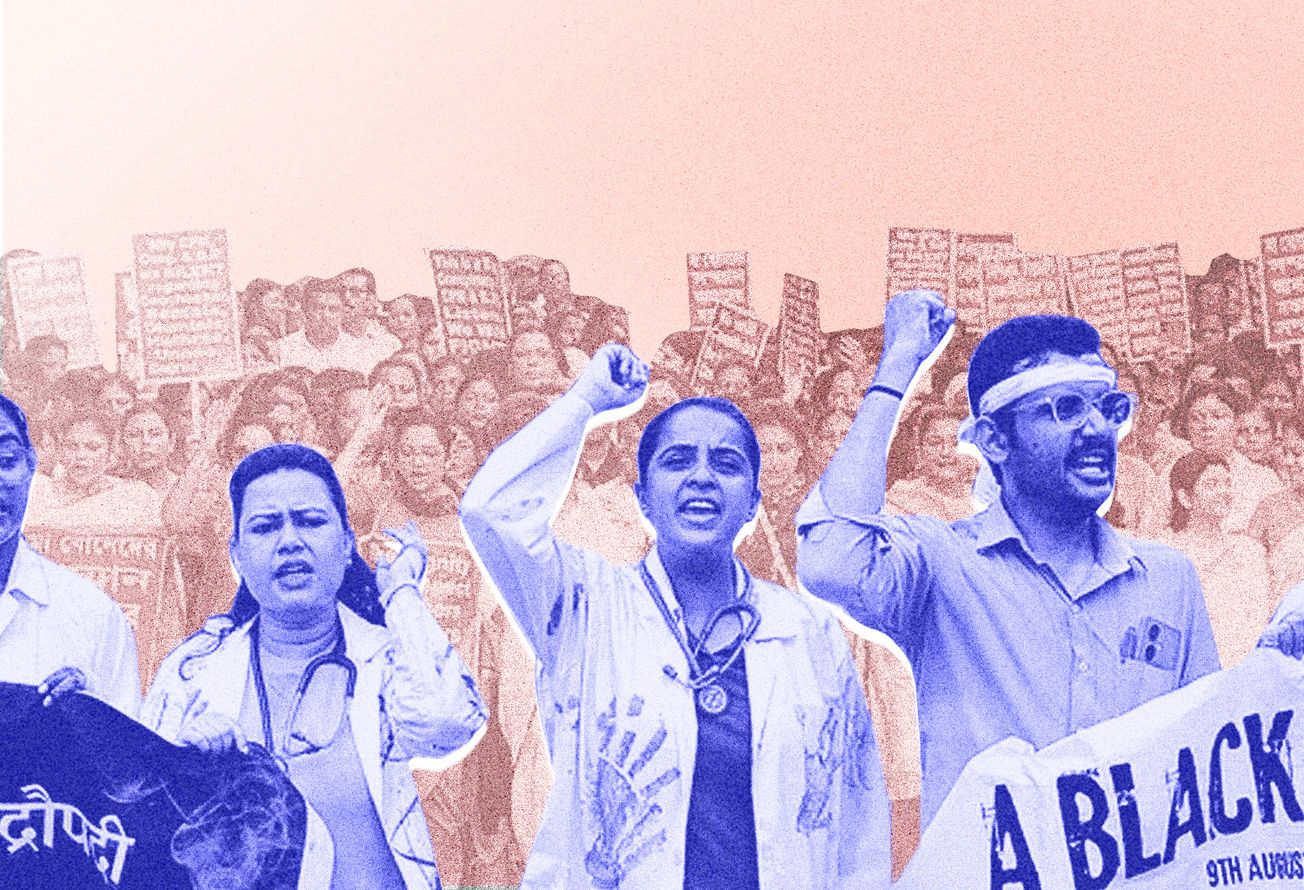"(F)eminism without respecting trans women & nonbinary people is just patriarchy. (R)educing women to their genitalia & reproductive capacity is just misogyny.(F)ortifying gender and sex binaries is not radical nor progressive, it is racist and conservative" – Alok Vaid Menon.
While the process of making the feminist movement inclusive and intersectional is continuous, organisations that work on feminist principles can take small steps in making the space safe and inclusive for transgender persons. Many organisations that I have been part of have already started this journey by hiring transgender persons and thinking consciously about ways to make the work environment more conducive for us. The practice of asking for chosen names and pronouns while meeting people for the first time is increasingly becoming common—a good practice to start with, so that we do not end up assuming anyone’s gender just by looking at them. However, there are a few other organisational policies that can make your workplace more trans affirmative.
Here is a list, by no means complete, of practices that may go a long way in making transgender persons feel welcome into the organisation.
1. An intersectional anti-discrimination policy: If you are a feminist organisation, I assume you already have this policy in place. It is always a good place to start. A written policy is important because it is a commitment the organisation makes towards their employees as well as employees make towards each other. It is also equally important to orient staff members regularly about the policy.
2. Gender Neutral or Segregated Restrooms? Many feminist NGO offices may not be large enough to have gendered restrooms but if you do have space, maybe it is time to consider having single stall gender neutral bathrooms and keep few restrooms gender segregated. However, it is certainly not advisable to make one restroom in a big office complex gender neutral such that no one uses it and the few gender non-conforming people who use it get marked as “the transgenders.” Also please do not call it transgender restroom. Remember transgender is an umbrella of gender identities and not a singular separate gender identity.
3. Ditch the dress codes. Lots of feminist NGOs continue to adhere to dress codes, especially for persons assigned female. While the saree is no longer a mandate, salwar kurta and dupatta are often demanded. This is particularly true when we work with rural communities or with socially and economically marginalised communities. It is popularly believed that looking like the communities we work with will help building rapport. I think it is important to acknowledge the fact that if we are an outsider no matter how much we change our façade, we will continue to be outsiders. However, many a times as trans persons we do, in fact, come from the similar caste, class or religious locations as the communities that the organisations work with. While hiring someone it is important to allow them the agency to judge what they can wear.
4. Your team and inclusive language. It is important that staff members, including administrative and finance staff be aware of and aligned with feminist ideologies. However, it is essential that you sensitize staff members on inclusive language before you employ transgender persons. The onus of educating the staff members cannot be on the transgender persons. It is a good idea to way discuss in advance how the person would like to be addressed and how much of their gender identity they would like to disclose. The organisation can also facilitate a space where the new employee maybe able to interact with the rest of the staff to explain how they desire to be addressed.
5. Do not forget that some trans people menstruate/get pregnant: Period and maternity leaves should be inclusive and be spoken of in gender neutral language. Say “persons who menstruate” and “pregnant person” to be more inclusive of transgender persons.
6. Simplify the paperwork. It is important to avoid using dead names (names that we do not relate to anymore) in documents as much as possible. Transgender persons may often have inconsistency of name and gender in their documents. Acknowledging this and navigating possible ways of making the documentation process easier can be an extremely supportive and important move. Trans persons may often not have a PAN cards or Bank accounts. Provide support in making documents or bank accounts if possible.
7. Be aware of our address and housing issues. Trans persons may not be able to furnish documents of permanent address as they have to often escape violent families. Avoid demanding for address proof wherever possible and accept current address wherever necessary. It is always helpful if there are provisions to provide housing support.
8. Acknowledge chosen families and partners. Your organisation should have provision for trans persons to register their chosen family members as nominees, guarantors, or signatories, if required.
9. Leave policies. These should include provisions for gender affirmative medical procedures. It would be ideal if medical insurance also covered gender affirmative medical procedures.
10. Sexual harassment policies. While gender-neutral sexual harassment policies are often seen as being trans inclusive, without acknowledgement of structural power imbalances, these can actually be detrimental for trans persons. It is important to both acknowledge sexual crimes against queer and transgender persons as well as identify certain groups as being more vulnerable to abuse.
If feminism is a movement toward gender equality, then the issues of transgender persons are by default feminist issues. It’s a shared responsibility of all feminists to break away the forced norms of binary sex and gender. While we continue to critique heteronormativity and transphobia, it is essential to simultaneously work on building a more inclusive world.










